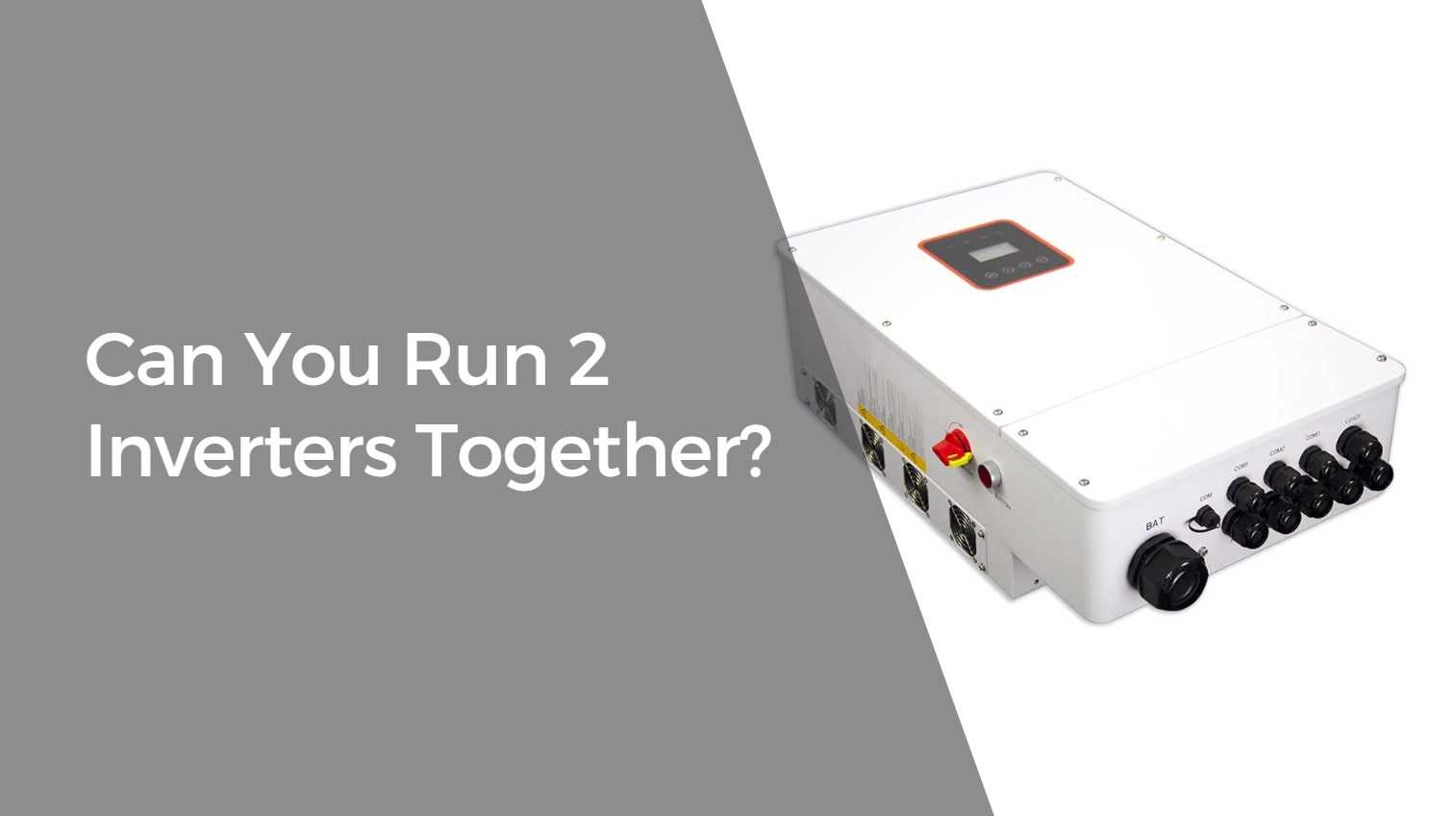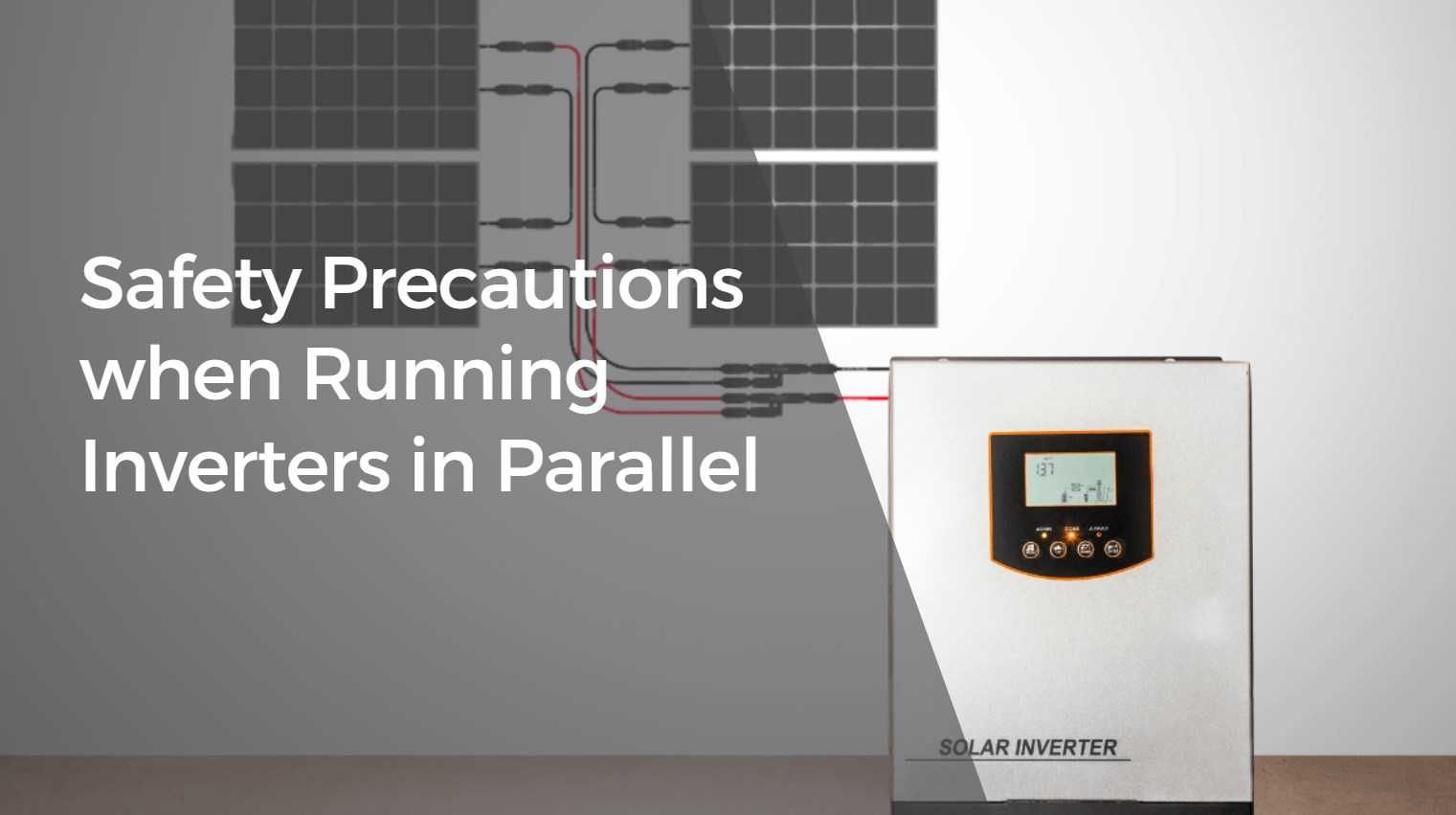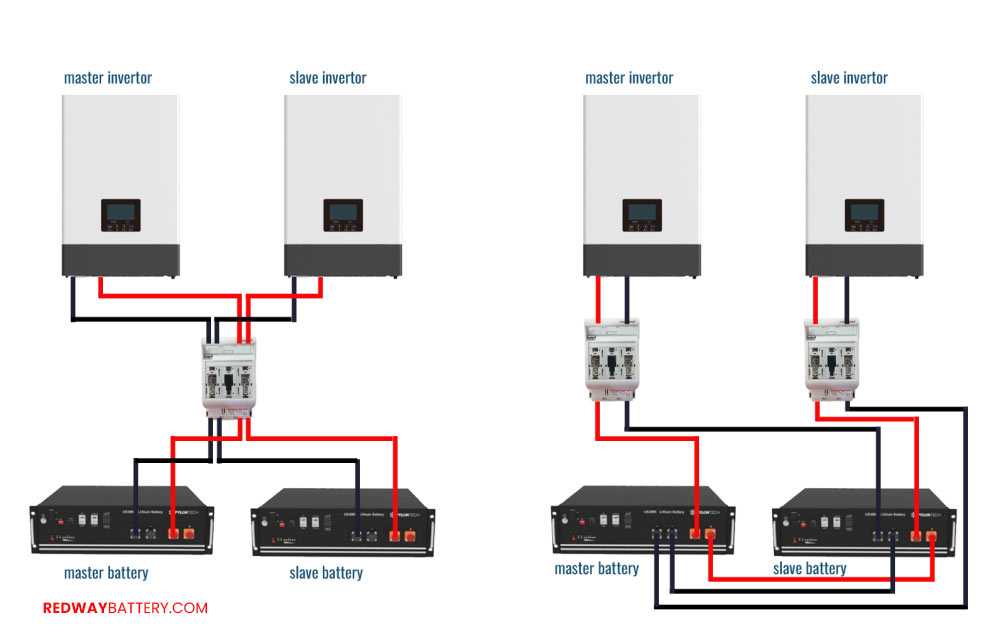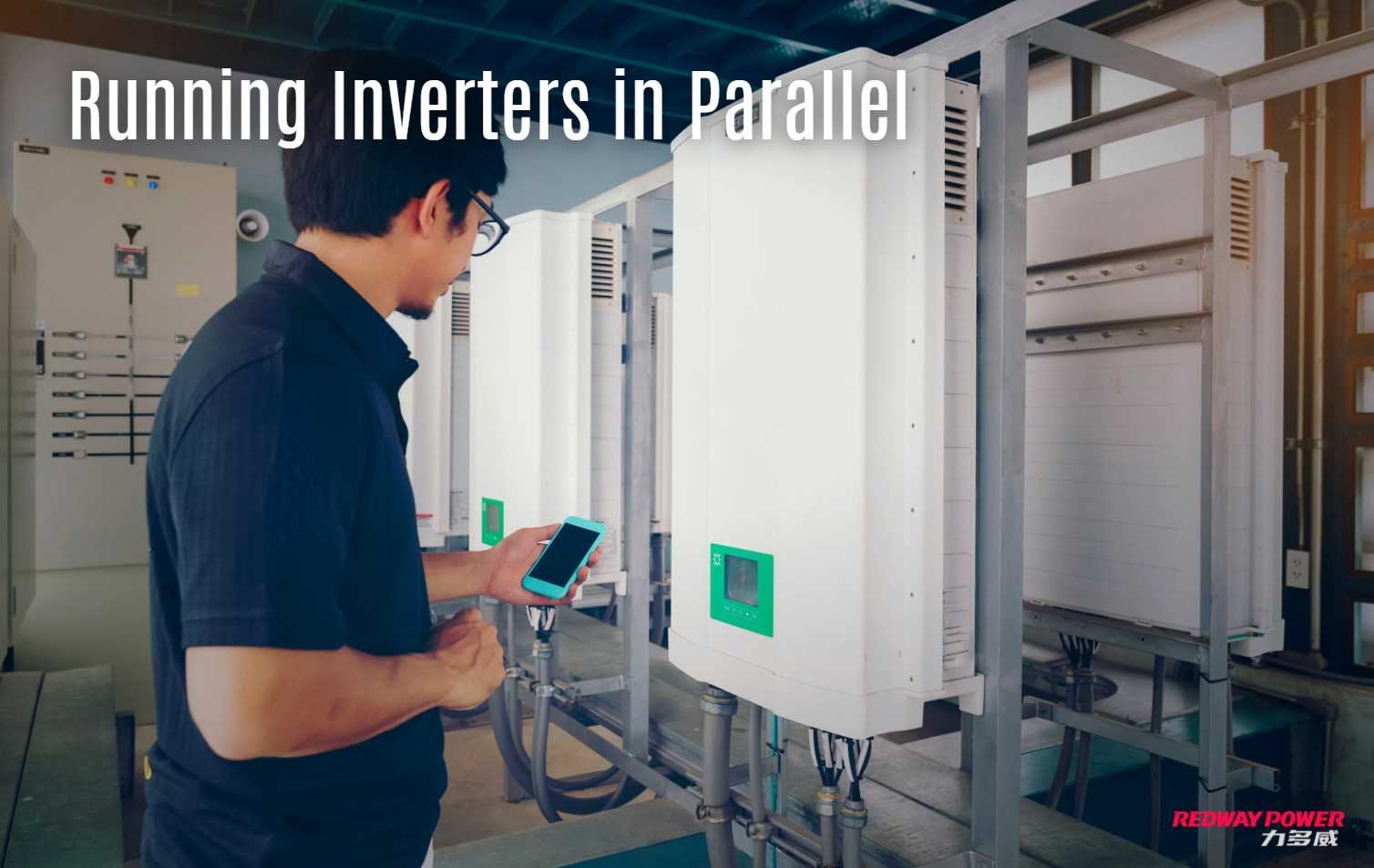Inverters are vital for converting DC to AC in solar and renewable energy systems. Running inverters in parallel is indeed possible. This article explores the process, steps, and benefits of parallel inverter operation. Additionally, it provides concise answers to the top 10 questions from energy storage and solar industry professionals.
The Benefits of Running Inverters in Parallel
Running inverters in parallel boosts power capacity by combining outputs of multiple inverters, catering to higher energy demands without overloading. It enhances reliability as if one fails, others continue supplying power. Also, it allows easy expansion, accommodating future energy needs. This setup ensures efficient and uninterrupted electricity supply, offering flexibility and scalability for growing power requirements.
Running inverters in parallel offers a range of advantages that can enhance your power system. Parallel operation increases the overall power capacity by combining the output of multiple inverters. This means you can meet higher energy demands without overloading a single unit.
Additionally, running inverters in parallel can improve system reliability and redundancy. If one inverter fails, the others can continue to supply power, reducing downtime and ensuring uninterrupted electricity supply.
Furthermore, parallel operation allows for scalability and flexibility in expanding your power system as needed. You have the freedom to add more inverters as your energy requirements grow, providing a cost-effective solution for future expansion needs.
Embracing parallel operation with your inverters opens up a world of possibilities for increased efficiency and reliability in your electrical setup.
Can You Run Inverters in Parallel?
Yes, you can connect inverters in parallel to boost power, but it’s important to do it right. Check that both inverters have similar specs, like voltage and current ratings. Follow the manufacturer’s instructions carefully for setup, ensuring proper syncing and load distribution. Always prioritize safety and seek professional advice if unsure.
Can You Run 2 Inverters Together?
Yes, you can run two inverters together to increase power output, but it’s essential to follow specific steps. Ensure both inverters have matching current ratings and are from the same manufacturer or have identical voltage and amperage ratings. Check voltage and frequency compatibility, use a parallel connection kit if available, synchronize the inverters, distribute the load evenly, and consult the manufacturer’s guidelines for safety.
When connecting two inverters in parallel, it’s crucial to match their voltage and frequency ratings. For example, let’s consider two inverters with the following specifications:
Inverter 1:
Voltage: 120V
Frequency: 60Hz
Inverter 2:
Voltage: 120V
Frequency: 60Hz
To connect these inverters in parallel, follow these steps:
Voltage Match: Ensure that both inverters have the same output voltage. In this case, both Inverter 1 and Inverter 2 have an output voltage of 120V, meeting this requirement.
Frequency Match: Verify that the frequency output of both inverters is identical. Here, both Inverter 1 and Inverter 2 have an output frequency of 60Hz, satisfying the condition.
Parallel Connection Kit: Some inverters come with parallel connection kits provided by the manufacturer. If such kits are available, use them as they facilitate proper synchronization and prevent any potential issues.
Synchronization: If a parallel kit is not available, ensure that the inverters are synchronized. This involves matching the phase and frequency of the output of both inverters. Failure to synchronize the inverters can result in power imbalances and potential damage to connected devices.
Load Sharing: Confirm that the connected load is distributed evenly between the two inverters. This helps prevent overloading of one inverter while the other remains underutilized.
Always consult the user manual or guidelines provided by the inverter manufacturer for specific instructions on parallel operation. They may provide additional details or precautions specific to your equipment.
Remember that connecting inverters in parallel can increase the overall power capacity and enhance system reliability, but it’s crucial to do so following the manufacturer’s guidelines to avoid any potential issues or damage to the equipment.

How to Run Inverters in Parallel:
Before connecting inverters in parallel, ensure they’re compatible by checking with the manufacturer. Use dedicated wires to connect the input terminals of the first inverter to the power source. Then, link the second inverter to the first one, connecting positive and negative outputs. Finally, plug the first inverter into the breaker panel using a compatible extension cord.
1. Consult the Manufacturer: Before connecting two inverters, it’s crucial to check with the manufacturer to ensure compatibility. Not all inverters support parallel operation, so it’s essential to use fully compatible ones to avoid any negative consequences.
2. Connect the Inverters: Start by connecting the input terminals of the first inverter to the battery bank or power source. Use dedicated wires specified by the manufacturer and keep the wire length under 6 feet to minimize power loss. Ensure the wires can handle the higher voltage and choose the appropriate wire size for optimal performance.
3. Link the Primary and Secondary Inverters: Connect the cables from the second inverter to the first one, linking the positive and negative outputs. Use alligator clips, a connection block, or wire for this purpose.
4. Plug in the Adapter: Attach a longer cord to the first inverter and connect it to the breaker panel. Make sure the voltage and amperage of your system are compatible with the extension cord. Take precautions to handle the increased amperage and power consumption.
Check:
Can I connect 3 inverters together?
Can I use 2 inverters in parallel?
How to Connect 2 Inverters Together:
Connect 2 inverters by ensuring they match in voltage and amperage. Link them to a battery with the same voltage, connecting positive and negative outputs. Use a breaker or extension cable with matching wattage and add circuit breakers for safety. Follow these steps for a reliable connection.
1. Acquire Appropriate Inverters: Obtain a second inverter that is identical to the first one in terms of voltage and amperage ratings. This ensures system-wide reliability and compatibility.
2. Link to a Power Supply Battery: Connect both inverters to a battery bank or a DC power source with the same voltage. Ensure that the combined power of the inverters does not exceed the capacity of the battery or power supply.
3. Link the Two Inverters Together: Connect the positive outputs of both inverters and the negative outputs using alligator clips, a connection block, or wire. Pay attention to proper polarity.
4. Connect to an Extension Cable or Breaker: Use an extension cable or a circuit breaker with a wattage rating matching the inverters’ combined output. Ensure the cable can handle the current without overheating.
5. Install Electrical Circuit Breakers: If necessary, install circuit breakers in your breaker box to protect the inverter system. Follow proper electrical wiring and installation practices or consult an expert.
Things to Consider Before Running Inverters in Parallel
Before connecting inverters in parallel, ensure they’re compatible and have matching power capacities. Secure wiring and connections are essential to prevent electrical hazards. Understand each inverter’s specifications and consult manufacturer guidelines. Distribute the load evenly, sync the inverters, and monitor regularly for safe and efficient operation
Before diving into running inverters in parallel, there are several important factors to consider. Check if the inverters are compatible for parallel operation – mixing incompatible models can lead to malfunctions. It’s crucial to ensure that the total power capacity of the parallel inverters meets your energy requirements without overloading them.
Additionally, confirm that all grounding and wiring connections are securely in place to avoid any electrical hazards. Understanding the technical specifications and limitations of each inverter is key to maintaining efficiency and preventing damage during parallel operation.
Consider consulting with a professional or referring to manufacturer guidelines for specific instructions tailored to your inverters. Assess whether running inverters in parallel aligns with your long-term energy goals and budget constraints before proceeding with installation.
Safety Precautions when Running Inverters in Parallel
When running inverters in parallel, safety is vital. Follow the manufacturer’s instructions closely, secure all connections, and avoid overloading. Regularly check for wear or damage, and address any issues promptly. Safety is paramount when working with electricity, so take precautions to ensure a smooth and safe operation.

Make sure to carefully read the manufacturer’s instructions and guidelines for running inverters in parallel. This will help you understand the specific requirements and limitations of your equipment.
Ensure that all connections are secure and properly insulated to prevent any electrical hazards. Loose connections can lead to overheating or even fires, so double-check everything before powering up the system.
Never overload your inverters by connecting too many devices at once. Exceeding the maximum capacity can not only damage your equipment but also pose a serious safety risk.
Regularly inspect your inverters for any signs of wear or damage. If you notice anything unusual, such as frayed wires or burnt components, immediately turn off the system and address the issue before resuming operation.
Remember, when it comes to working with electricity, taking precautions is key to ensuring a safe and successful experience.
FAQs about inverters in parallel
1. Can I connect different brands of inverters in parallel?
– No. It is recommended to use inverters from the same manufacturer or those with compatible specifications to ensure proper functionality and avoid damage.
2. What is the advantage of running inverters in parallel?
– Running inverters in parallel allows for increased power output and the ability to handle larger loads, making it suitable for demanding applications.
3. Are there any safety concerns when running inverters in parallel?
– Yes. Safety concerns include proper wiring, using compatible inverters, and ensuring the system can handle the increased amperage. Consult the manufacturer and follow guidelines to minimize risks.
4. Can I run inverters in parallel with different power ratings?
– No. It is not advisable to connect inverters with different power ratings in parallel as it can lead to unbalanced power distribution and potential damage to the inverters.
5. Can I parallel connect more than two inverters?
– Yes, it is possible to connect more than two inverters in parallel, but proper consideration of compatibility, load-sharing capacity, and waveform synchronization is essential.
6. How do I calculate the total power output when running inverters in parallel?
– Add the wattages of each individual inverter to determine the total power output. Ensure that the combined power output exceeds the wattage requirement of the load you intend to power.
7. Are there any limitations to running inverters in parallel?
– Yes. Running inverters in parallel increases power output but also increases power consumption. Consider the capacity of your power source and ensure it can handle the increased load.
8. Can I connect inverters in parallel for off-grid solar systems?
– Yes. Parallel connection of inverters is common in off-grid solar systems to increase power output and meet the energy demands of off-grid living.
9. What happens if one of the inverters in a parallel connection fails?
– In the event of a failure in one of the inverters, the other inverters in parallel will continue to operate, providing power to the load. However, it’s essential to address the faulty inverter to maintain the overall system’s efficiency.
10. Can I connect inverters in series instead of parallel?
– No. Inverters can be connected in series, but it is less common and may require additional considerations. Series connection increases voltage while maintaining the same current. It is typically used in specific applications where high voltage is required.

11. Why are inverters connected in parallel?
– Inverters are linked in parallel to elevate system power capacity. This configuration enhances reliability and provides a backup, ensuring continuous power supply even if one inverter experiences issues.
12. What are the advantages of a parallel inverter?
– Parallel inverters offer heightened power output, increased efficiency, and redundancy. For example, connecting two inverters with a combined capacity of 4kVA provides a power capacity of 8kVA in parallel. This redundancy ensures uninterrupted power supply and flexibility in load management.
13. How are inverters in parallel different from series?
– In parallel, inverters share the load, amplifying overall capacity. For instance, connecting two 3kVA inverters in parallel results in a combined capacity of 6kVA. In series, inverters increase voltage but not capacity. Understanding this difference is crucial for designing systems with specific power requirements.
Conclusion:
Running inverters in parallel offers increased power output and improved load handling capabilities. By following the manufacturer’s guidelines and considering compatibility, practitioners in the energy storage and solar industry can harness the benefits of parallel connection. It’s crucial to prioritize safety, proper wiring, and system capacity to ensure optimal performance and longevity of the inverters.




